Zeiss APO Sonnar 135mm f/2 (ZF.2) Review
Flare:
Zeiss is well-known for many things, some of them are documented such as build quality, some are rather mythical, such as famous Zeiss look, but if there is one thing that Zeiss really deserves credit for, its obligatory T* coating.
I have been on few presentation where company experts demonstrated great flare resistance of Zeiss lenses and I experienced that myself in many occasions. With the boom of digital photography however, legacy lenses become more vulnerable because of the sensor reflections.
To fight against sensor reflection is really difficult and most of the flares that we actually see in our images, are more or less related to this phenomenon.
Nikon D800E is not as bad in that respect as e.g. Sony A7, but it is just matter of slight changes in the angle toward sun, to reveal nasty flares with almost any lens….
Following test images are thus rather informative – what can be expected under similar conditions, but because they were taken from the hand (to compensate for sun position), situations are not identical and thus lenses are not directly comparable. (We could use studio light to simulate sun position and make identical set-up for all lenses, but distance to such a light source is much smaller than toward sun, and results obtained that way, might not correspond with a real life experience).
Here are few shots that you can open in gallery view and check the relative lens behavior in sunlight coming from the top right corner at f/2 and f/8, and sun coming directly at f/4 and f/8.
Zeiss have a clear edge in this test, but as I wrote above, if you change angle just a little bit, results might be slightly different. From many other shots that I took however, I feel confident to say, that Zeiss APO Sonnar 135mm f/2 lens does great job when it comes to flare resistance, especially in terms of keeping contrast high. Samyang is less predictable when it comes to flaring, but slight change of the position might bring him very close to Zeiss in terms of contrast. More pronounced rainbow like flares are visible in almost all situations where flare appears. Nikkor shows its age (in terms of coatings in this case) and the loss of contrast in back-lit situations is notable.
There is only one thing that I’d like to mention… I like flares and loss of contrast in back-lit situations for portraits 🙂 Nevertheless I have to admit that Zeiss engineers did splendid job with recent T* coatings and most users will love it.
Bokeh:
Have you ever noticed how clever advertising is hidden in this magic word? (Well done KEH.com)
There are few reasons why you might consider lens with such a fast aperture (at this focal length). Either because you think that BIF means Bat In Fly so you need your lens to gather as much light as possible, or you take “sharp as a pin” literally, so that everything behind pin top should be out of focus, or you have heard that fast lens is cool to have or number 2 is your lucky number.
In this part I’d like to focus on the Pin pals… I already wrote that Zeiss APO Sonnar 135/2 is sharp as a pin, but how’s about the rest of the image? What about BoKEH?
I’d like first to show you two sets of images with Zeiss APO Sonnar 135/2 at all apertures from f/2 to f/22
Here is the first one:
Both – blur quantity and blur quality can be observed on those images. There is one thing to consider though. When shooting dominant subject such as model outside e.g., I am always trying to ask myself – how important is surrounding for resulting image. In other words – in many cases I’d like to bring my subject in relation to the background (or foreground), but on the other side I’d also like to isolate it so that viewer attention goes to the right direction. Choosing proper aperture for the desired interaction between subject and background is thus important part of creative process and it depends on many variables, such as structure, color, lighting, distance, content importance etc. In the simulated scenario above, I’d pick aperture of f/5.6 because it gives me nice relation between sharp and blurred areas.
When your subject is smaller and background closer though, wide open aperture and thin DOF often gives most pleasing results. (This is for sure very subjective).
Here is another set of all apertures showing situation described above:
In this scenario I’d pick f/2 as the preferred aperture.
I wrote about this because I am often confronted with the opinion that Bokeh is quantity of the blur. While this might be true according to Wikipedia, I like to think of it purely as a quality of the blur. What we have seen above in those two sets, has more to do with the quantity than quality.
In order to discuss quality of the blurred (and transition to the blurred) areas, it is good to see how lenses render highlights.
Here is set of images of Zeiss APO Sonnar, focused to MFD with a night city lights at infinity distance. This time, aperture was moved by 1/3rd of the stop up to f/5.6, from where it goes by full stops all the way to the f/22.
We might see that circular highlights have tendency to form elliptical shape instead of circle. This, so-called cat-eye shape, gradually increases toward edges and is caused by mechanical vignetting of the lens. To be honest, this was slightly disappointing for me but expected to certain extent when I saw light fall off at widest aperture. Stopped down just 2/3rd of the f-stop, highlight shapes improve to almost regular circles, but aperture blades starts to be visible.
While shape of bokeh is not perfectly rounded wide open, distribution of the light is very smooth and this is one of the most important attributes related to the quality (character) of the bokeh.
Samyang 135/2 ED UMC however excels in both categories. Let’s take a look at following direct comparisons at f/2 and f/2.8
Zeiss vs Samyang at f/2
Zeiss vs Samyang at f/2.8
As you can see, Samyang has almost perfect circular shape of the blurred highlights across the image and both lenses with their 9 aperture blades creates regular shapes wt f/2.8. Both lenses also show very smooth light distribution with almost invisible outline. At this point we might say that because of less pronounced mechanical vignetting Samyang has smoother bokeh, but that won’t be entirely true in practice.
There is another thing coming into play – defocus magnification.
As you can see from above comparisons, from the same position and at the same subject distance, with both lenses focused to MFD, Zeiss creates larger highlight circles (visible at f/2.8) and in effect we might enjoy “more blurred look of the background”.
It won’t be fair to forget about Nikkor at this point. Nikkor has specially designed feature called Defocus Control (thus DC in the lens name). What it does is allowing user to increase spherical aberration either toward front focus or rear focus, in order to create smoother bokeh (improve light distribution and increase defocus magnification).
Increased spherical aberration will soften image in effect, but unfortunately also in the focus plane.
Images will explain this better than I am able to do with my poor English…
Here we have both lenses at f/2 with Nikon DC at neutral position.
Zeiss vs Nikkor at f/2 (DC Neutral)
You might notice slight CA at the highlight edges with Nikkor, slightly lower mechanical vignetting and as you can see,
slightly smaller circles.
In the following comparison we can see what happen when Nikkor is Defocused using Control ring, to its maximum value toward rear.
Zeiss vs Nikkor at f/2 (DC Rear Max)
While there are still traces of CA, light distribution is much smoother with Nikkor lens now, and circles are larger than with Zeiss.
I thought that it would be interesting to compare Zeiss with few other 135mm lenses from our collection, including another very interesting Bokeh master – Sony 135mm f/2.8 (T4.5) STF.
In the following test shots, street lamps were much closer to the lens (closest is approx. 5m), so you’ll be able to better compare magnification aspect.
Zeiss vs Samyang at f/2
Zeiss vs Nikkor at f/2 (DC Neutral)
Zeiss vs Sony Zeiss Sonnar T* 135/1.8 at f/2 vs f/1.8
(There is mistake in the image description above, Sony lens is at f/1.8. Beautiful bokeh isn’t it?)
Next comparison shows Zeiss at f/2 against Sony 135/2.8 (T4.5) STF. This is very special lens which uses built in apodizing filter in order to create smooth gradient of light distribution in the highlights. Sony lens (originally Minolta design) is on f/2.8, but it let only T4.5 light in.
Zeiss vs Sony 135/2.8 (T4.5) STF at f/2 vs f/2.8
That’s what I would call, super smooth bokeh 🙂
Finally we shouldn’t forget strongest player in the field. I am pretty sure that Canon’s EF 135mm f/2 L USM is among those lenses, clear champion in sale figures. It is also most popular 135mm fast lens recently IMHO.
Zeiss vs Canon EF 135/2 L USMat f/2
That is lot of images captured, just to show bokeh characteristics. After making such an effort to compare those lenses in one of the vital aspects of this focal length, we decided to make another two tests with subjects in daylight. Differences in bokeh rendering won’t be as significant as with night lamps, but they will be closer to what most will experience in real life shooting. You can use gallery mode to scroll through.
Set 1:
Set 2:
This is basically it. We tried to show you all aspects of this phenomenal Zeiss lens, comparing it to the best in its class. It’s time to move to the final part of our review, part where we will write a summary/conclusion and show you some people portraits and sample images.
Please help support this page and upcoming reviews and buy through affiliate links, with no extra cost for you:
Buy on BHPhoto: 135mm f/2 Apo Sonnar T* ZF.2 Lens for Nikon F Mount
Buy on Adorama: 135mm f/2 Apo Sonnar T* ZF.2 Lens for Nikon F Mount
Buy on Amazon: 135mm f/2 Apo Sonnar T* ZF.2 Lens for Nikon F Mount BEST OFFER!
To help this page survive, your donation will be highly appreciated.
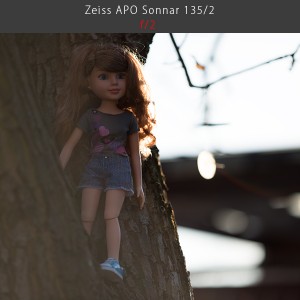
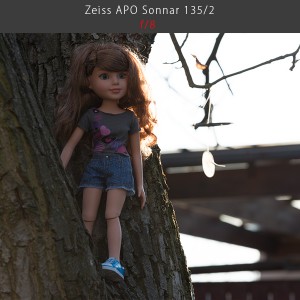
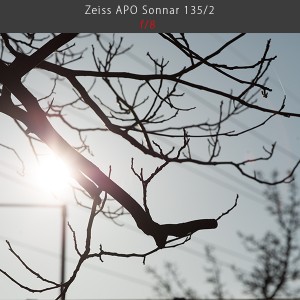
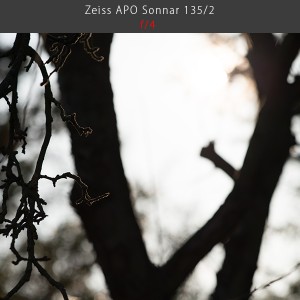
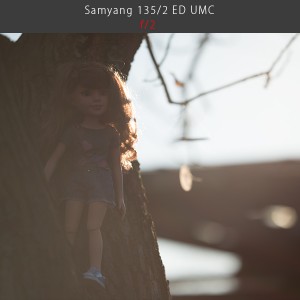
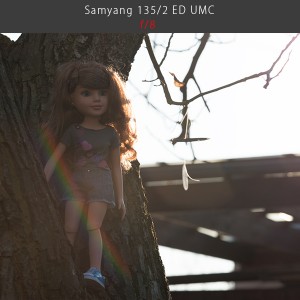
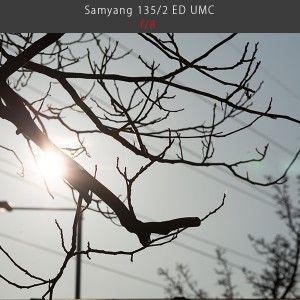
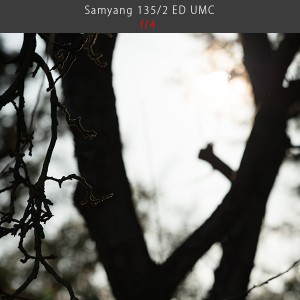
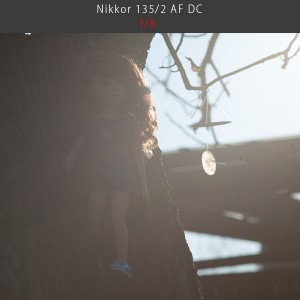
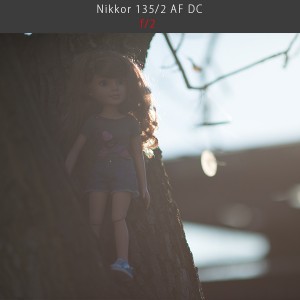
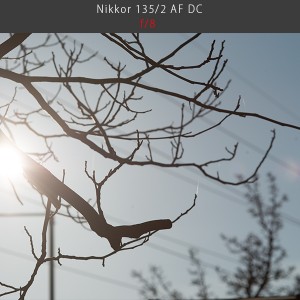
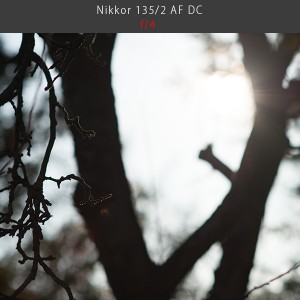
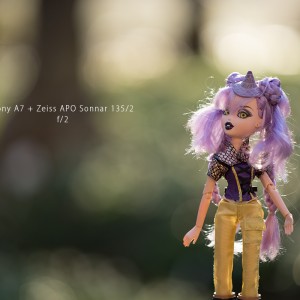
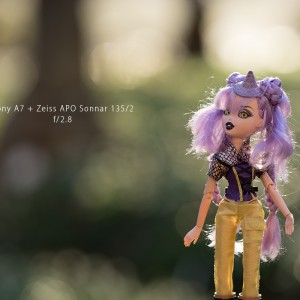
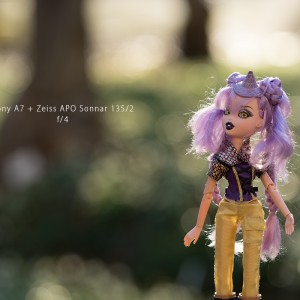
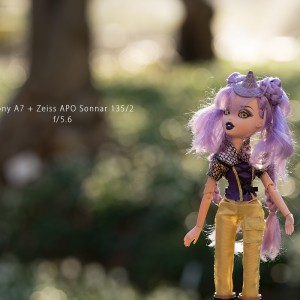
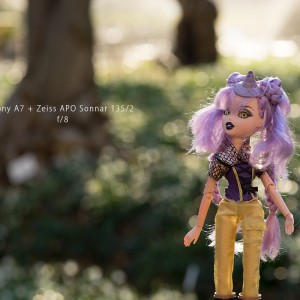
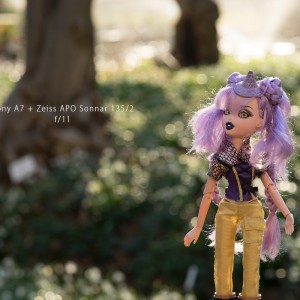
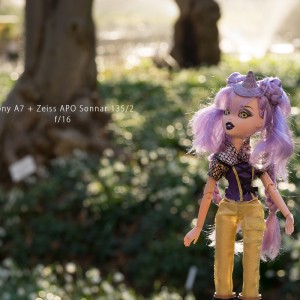
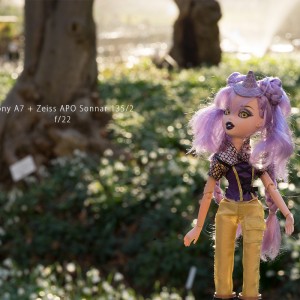
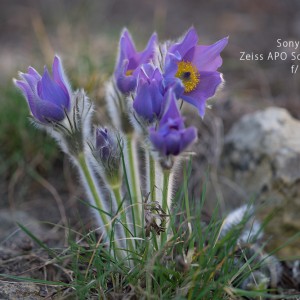
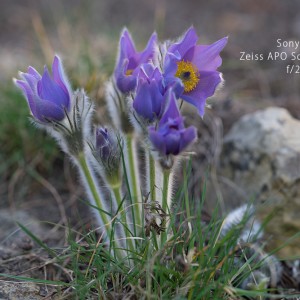
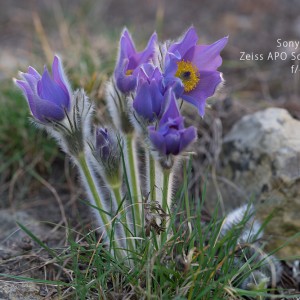
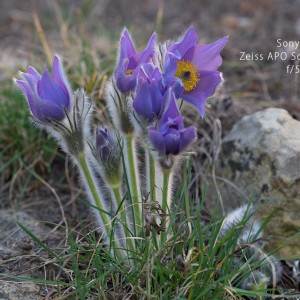




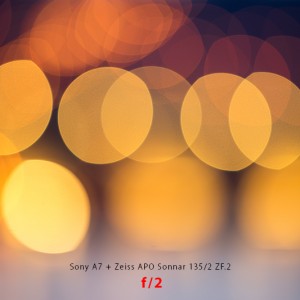
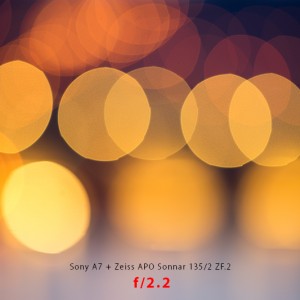
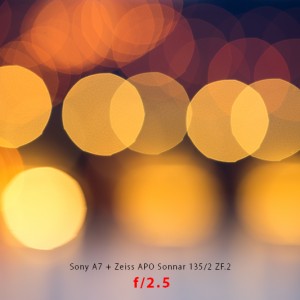
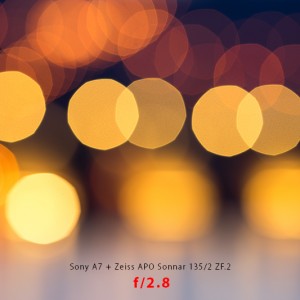
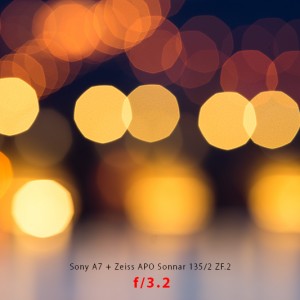
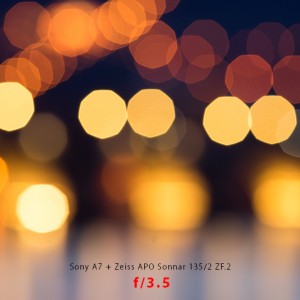
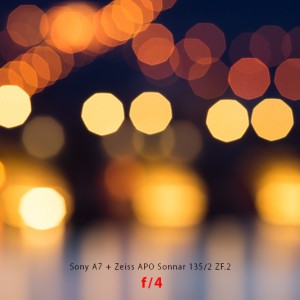
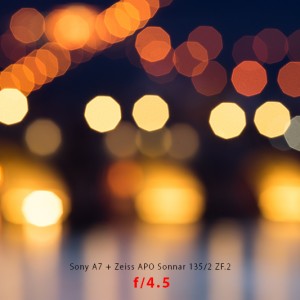
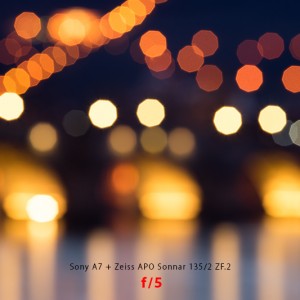
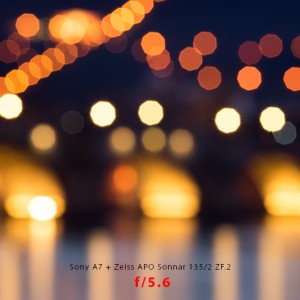
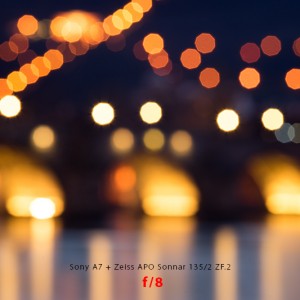
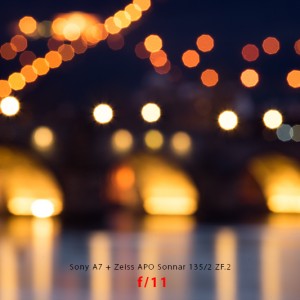
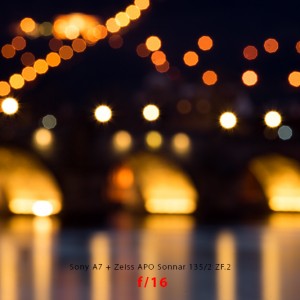
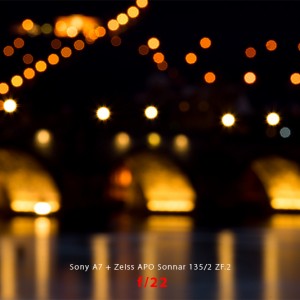
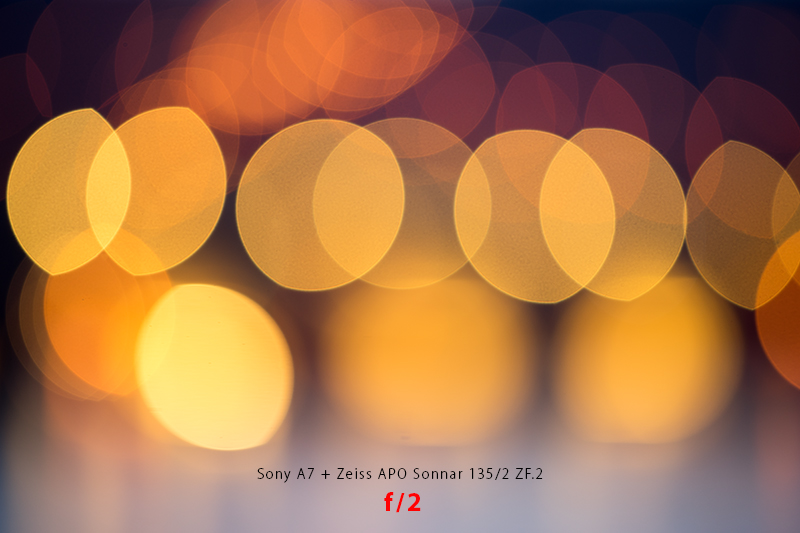
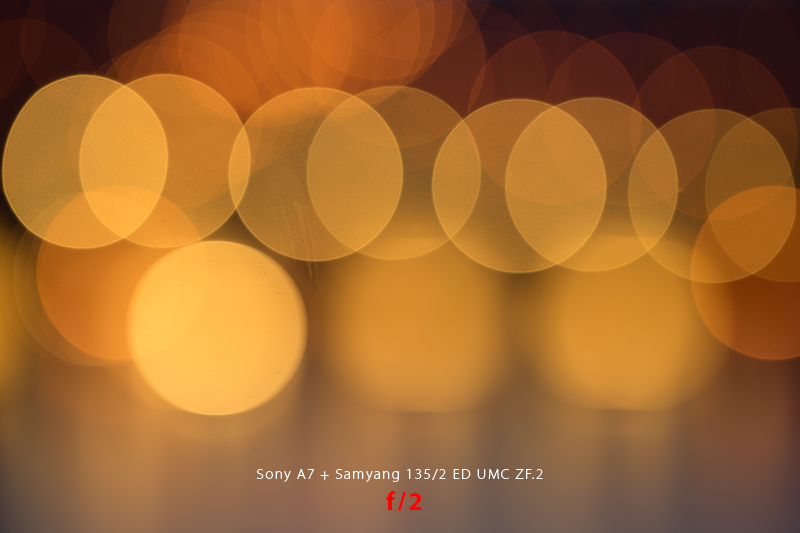
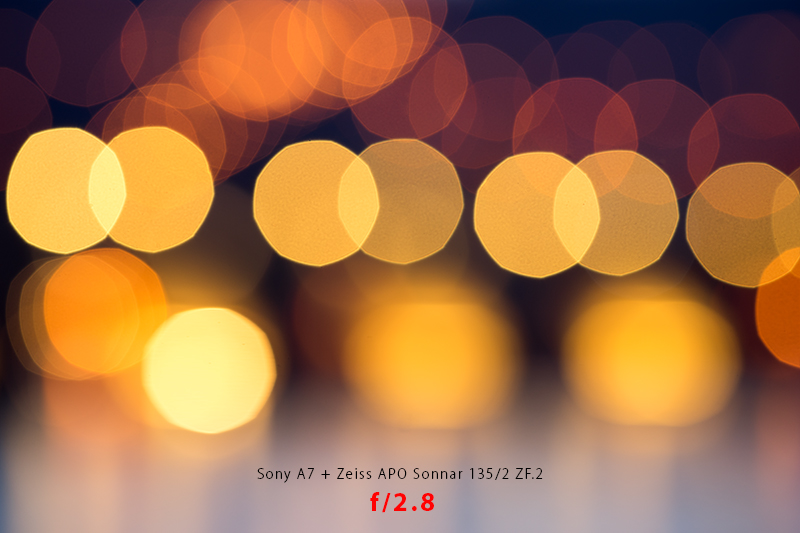
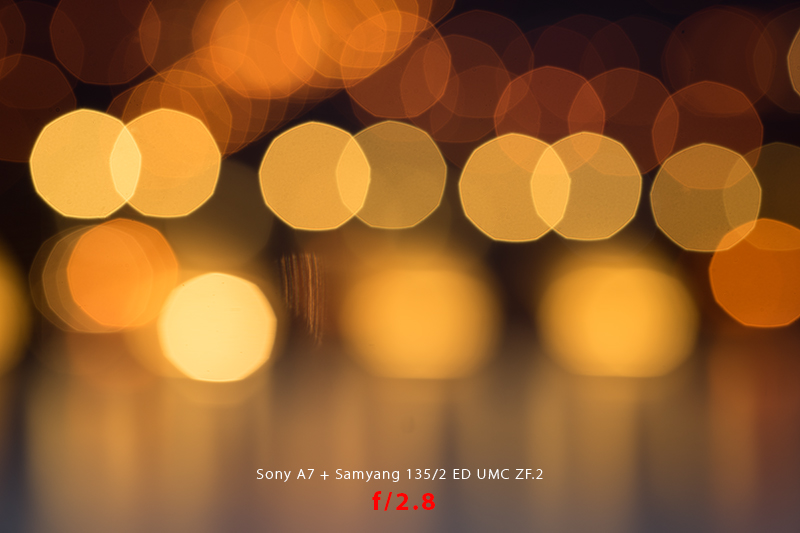
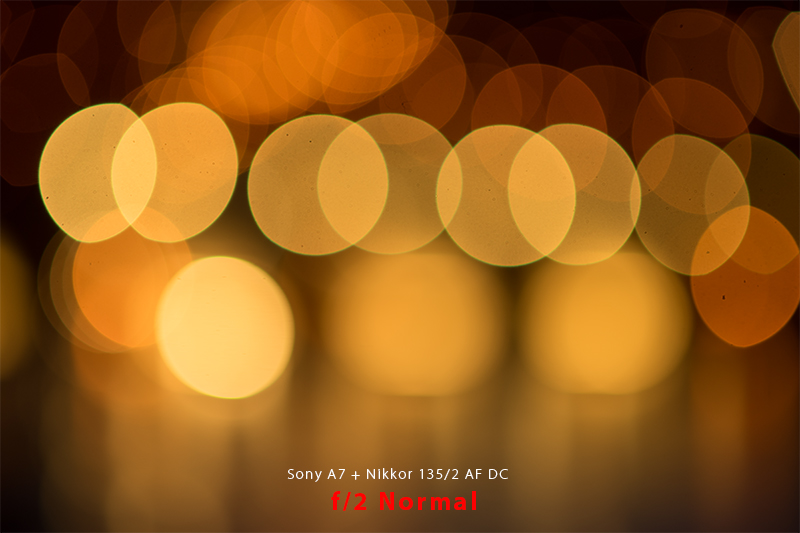
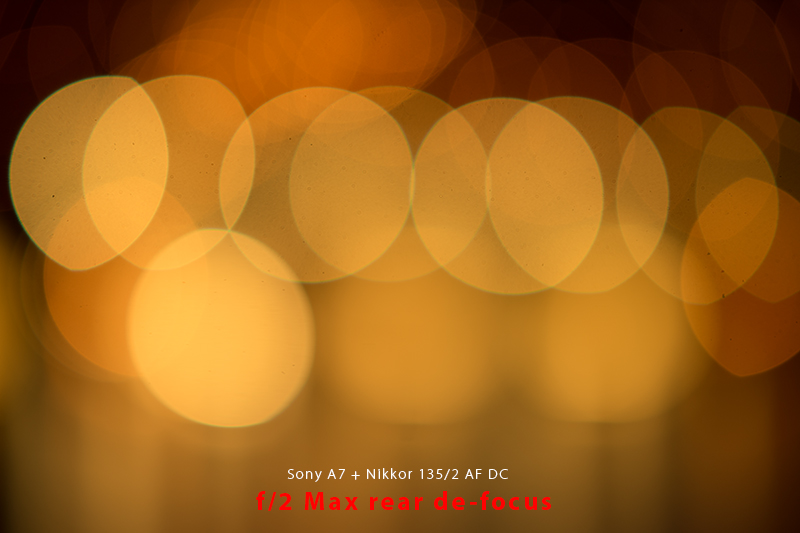
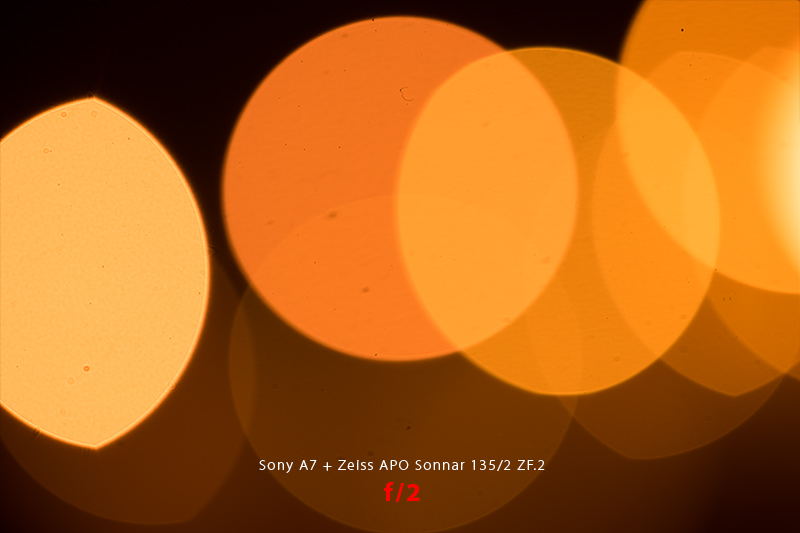
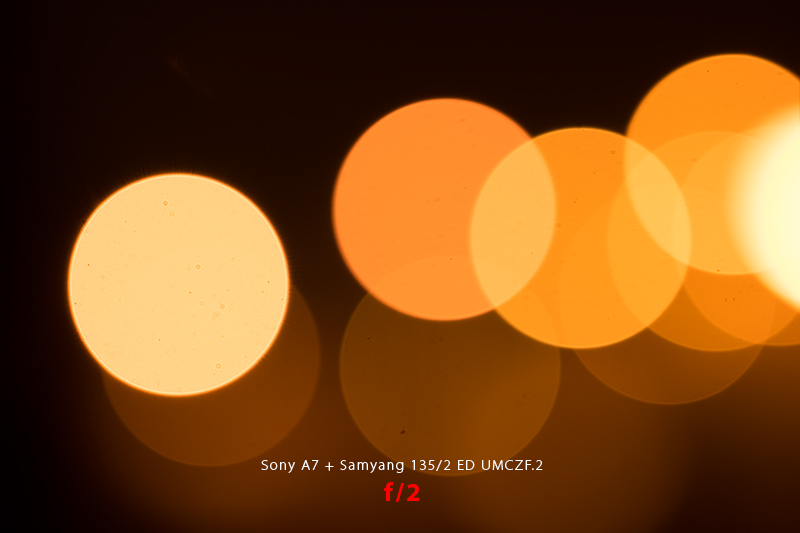
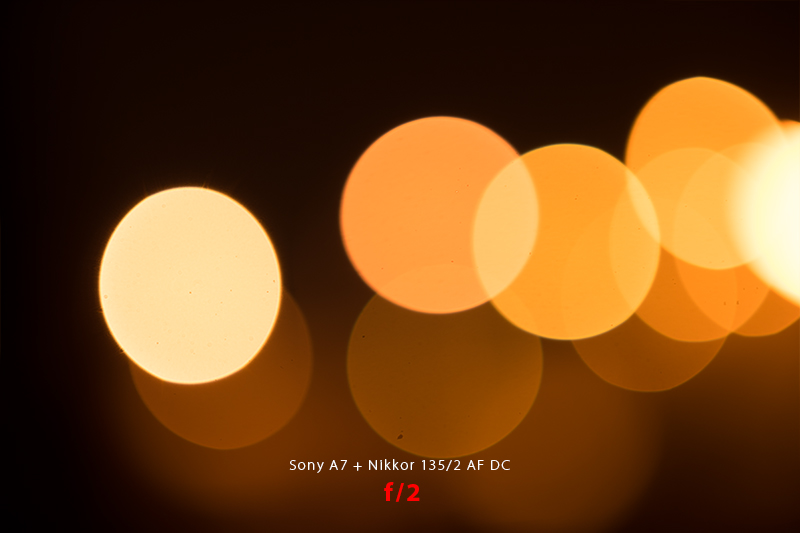
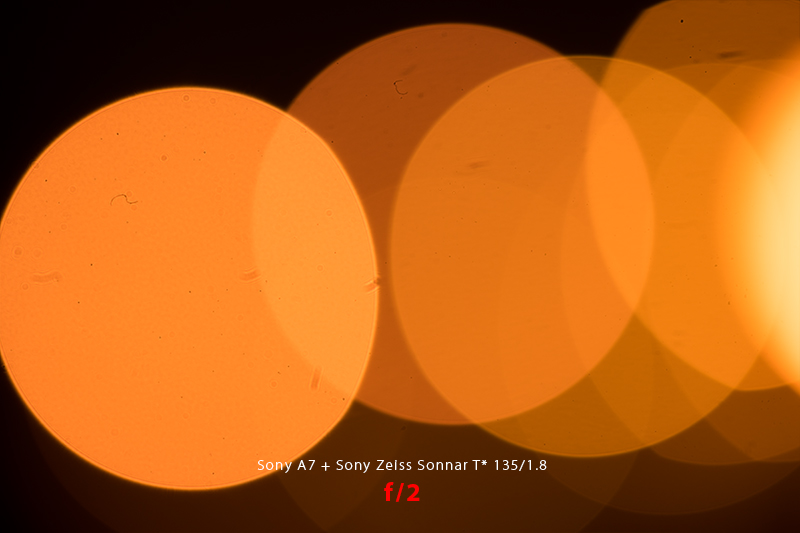
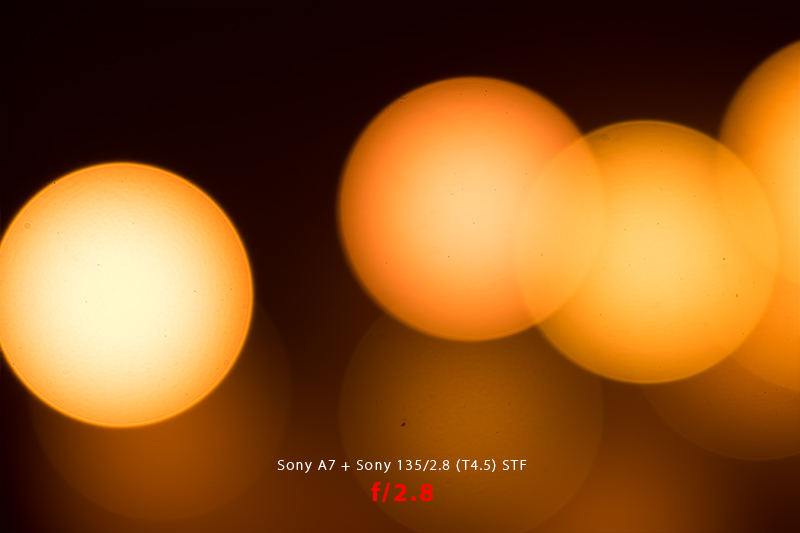
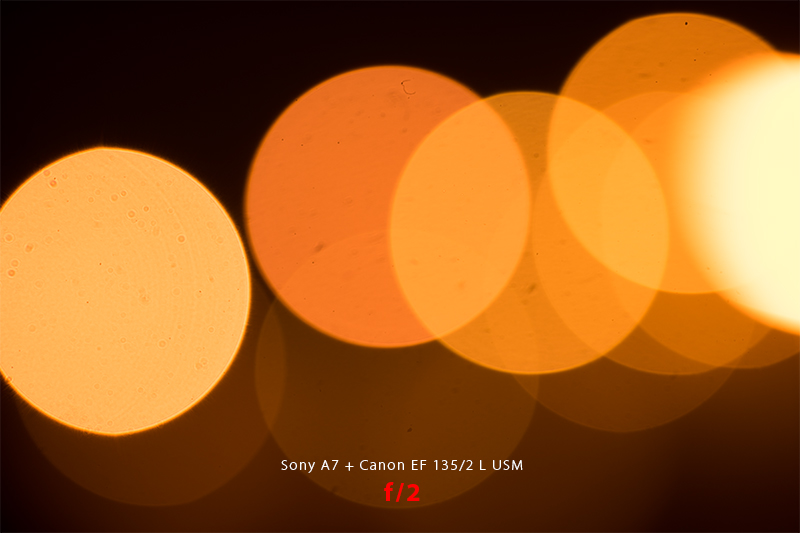
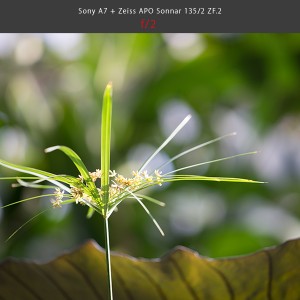
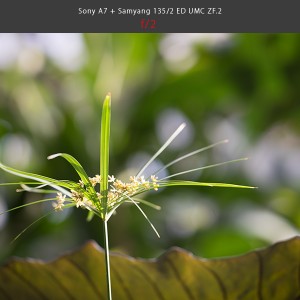
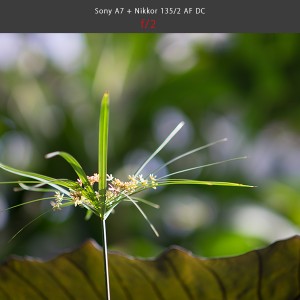
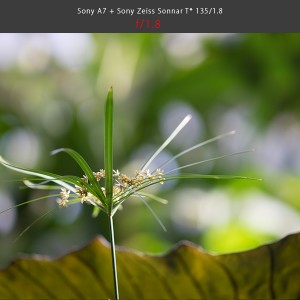
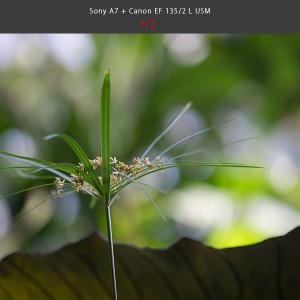
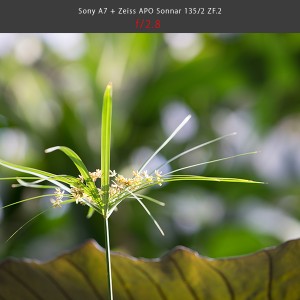
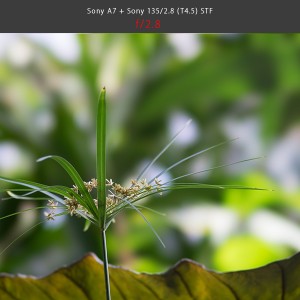
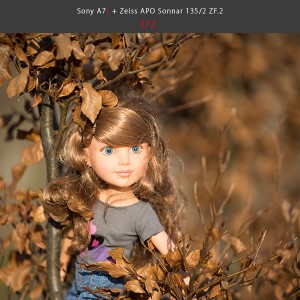
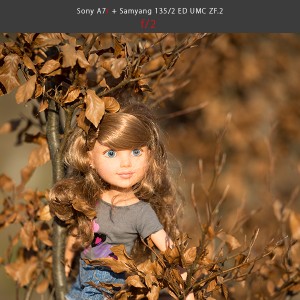
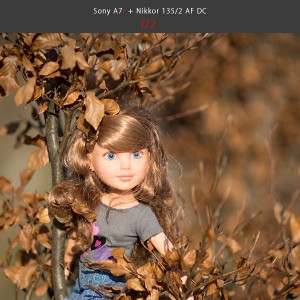
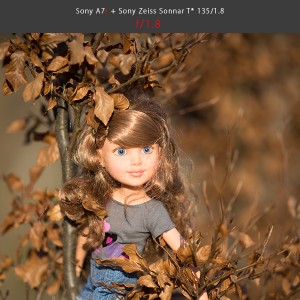
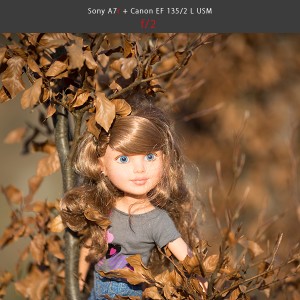
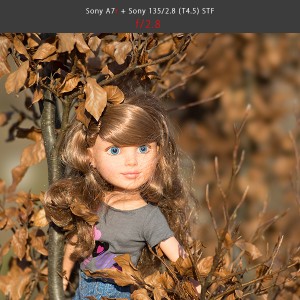
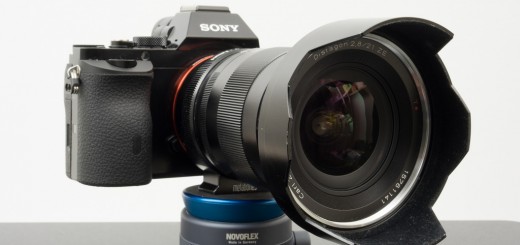
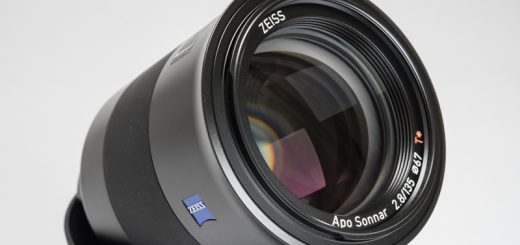
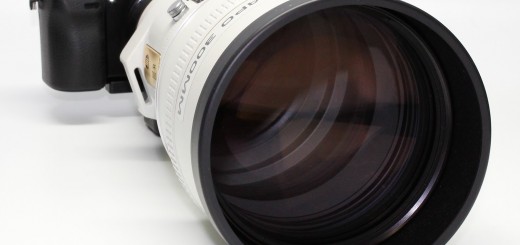











Hi. Was just curious as to which D/SLR would be suitable (not at fault regarding precise focus) at achieving critical focus with the Ziess 135mm f2 manual focus lens wide open, with its shallow depth of field. quickly without viewing aids. Especially do to my weakening eyesight as I age. For I do appreciate fine quality, but only when practical. Dennis
Hi Dennis,
using manual focus lenses with recent DSLR cameras is very tricky… There are some after market split screens such as – http://www.focusingscreen.com/work/d800en.htm
but using it will probably cause lot of troubles related to exposure or super imposed information in viewfinder.
Another option would be to use rear LCD with a hoodman or similar loupe and camera in live view mode (similar as it is used by videographers). In that respect I would suggest recent Nikon flagships such as D810 and D750 because they are using higher quality/resolution screens.
You can of course use mirrorless cameras such as Sony A7 series, if you don’t mind lack of EXIF, iTTL and compressed RAW.
I have solid success in using my regular viewfinder with DH17 magnifier view-piece and rubber eyepiece.
Initial focusing is just a part of the problem though, because DOF is so thin, that slightest movement of you or yours model will result in blur, especially at pixel level. There are nice software tools recently for repair of small motion blur such as shake reduction in photoshop CC or piccure + e.g.
Finally, it’s also about technique that will best suits your shooting style. I tend to use high speed drive mode (3-4 frames per second) whenever possible. When acquiring critical focus (or what I believe it should be) I take deep breath (which moves me slightly backward), fire the shutter and keep blowing the air out (which moves me slightly forward). At SS from 1/200s and faster I usually manage to have 1-2 sharp images in the series.
Cheers,
Viktor
One of the best reviews i ever read, much better than any done with in lab measurements. The Zeiss is not for me, i came here searching for reviews of the Samyang 135/2, which i now own (my 5th Samyang).
Keep the excellent work going!
Tomas
http://www.pbase.com/tomasg_71
Thank you very much Tom, I think you made great choice with Samyang.
Cheers,
Viktor
Very good review. I always was reluctant to get a Nikkor 135/2 dc due to color shift or lack of sharpness wide open. In a recent thread at Dpreview a very well respected photographer showed excellent images with sharpness and contrast better than the 70-200/2.8 vrii, a lens which is well respected. I pointed her to your blog and asked about her test, which didn’t show this softness and color shift. She explained that the Nikon lenses have oftentimes a problem with the DC ring. It is not perfectly calibrated (Nikon confirmed) and needs to be offset. Having found the “true” dc-ring position the results are excellent even wide open. Nevertheless, doesn’t change the fact that the Zeiss 135/2 is one of the best lenses out there.
Hi HF,
thank you for your comment.
I tested DC ring calibration prior to this test (right after the purchase) and what was presented here, was best wide open result, that I was able to achieve with the lens 🙁
I also tried two copies prior to purchase and this one was better of the two (sharpest in the center).
This doesn’t mean of course, that someone else can’t have better luck with its sample.
Other reason might have something to do with specific lighting conditions and distance to the subject.
I haven’t tried 70-200 f/2.8 VR II, we don’t have this lens, nor we have any contact with Nikon to get a testing sample, so I can’t comment on that, but I assume that comparison was made at f/2.8 and most of our results here were captured at f/2.
Zeiss is a fantastic lens for sure, but all of the lenses tested here are exceeding my photographic needs and skills anyway.
Cheers,
Viktor
Great review of Zeiss 135mm APO lenses and comparison (both lab and field) for the other 2 Nikon mount 135mm lenses. I got a 105mm F2 DC which is not as razor sharp as Zeiss 135mm APO (nor makro planar 100mm), but with a nice rendering skin tone. Thus my wife prefers the Nikon 105 much more than the Zeiss, because most of the time, girls don’t want to reveal the tiny defects on their face. Anyway, all great lenses but with definitely different emphasis.
BTW, the external purchase link seems to be messed up between Amazon and Adorama.
Hi Victor,
I like those Nikon DC lenses too. 105 DC is very nice lens indeed.
Thanks for the link warning, I will ask our IT guy to check it out.
Cheers,
Viktor
I have both the 135mm Zeiss and the 135mm DC Nikkor.
The are both fantastic wide open on my D600 or D810.
The DC Nikkor gives you Bokeh softness control to your
personal taste. Great review.
Hi Paul and thank you for your comment. I agree, they are both lenses with unique “signature”.
Cheers,
Viktor
Great review and good comparison. It almost feels like the Zeiss is good yet the vfm makes the Samyang a brilliant lens.
I had the Canon version of this lens and loved every single picture out of this lens. the color and pop are nothing short of amazing.
Is Samyan similar in that feel? From the pictures on close ups it does look like Samyang is sharper but as an overall picture there is something about the zeiss.
Is it just me ?
Hi Mark,
Samyang has somewhat warmer rendering (toward red) and build quality is nowhere near Zeiss. But that’s about it, and in a real life, I doubt that many will notice any resulting differences, when lenses are compared next to each other.
Zeiss is however tremendous lens in every aspect and beside giving the photographer outstanding optical corrections it is joy to use, especially when it comes to the manual focus speed and precision. (Tactile and responsive feeling is very important for MF)
Cheers,
Viktor
I agree with everyone here saying what a great review this was. It was exactly what I needed. I purchased the 135 DC about 6 months ago, and as much as i’ve been loving the bokeh, it bothers me that i have to shoot it at 2.5 (neutral) to get anything even close to usable in my standard, even then its not as sharp as i would like it.
So my next thought was… What could I replace it with, and the only two options i found were these two. My question to you is if you’ve found the overall contrast to be lower with the samyang? As well as the colors being too warm? I have a Rokinon/samyang 24 tilt, and the overall contrast seems low and flat… with the colors been quite warm. that being said I’m also aware that the 24 tilt isn’t exactly known for being sharpest lens.
I do use a color checker, so the colors can be calibrated, but its obviously not the best starting point if you know what i’m saying.
Hi jp,
thank you for the comment.
Regarding contrast, I can’t say it’s lower than Zeisss. In my eyes it’s on par (micro contrast I mean) and even in direct back light situations it holds well (that’s the area where Zeiss is traditionally very strong)
Color shift toward warm tones is obvious though and I wrote about it. I won’t find this as a deal braker, if you are not planning to:
a) use several primes per project (wedding eg.)
b) shot video often.
In both cases, you might find color shift correction in pp annoying and time consuming.
Hope it helps,
Viktor
Wow, i didn’t even notice your review was multi pages of indepth review! I didn’t see the color page. Now it leaves me questioning about the angle of view thing. Would you say that it really is just that close focus quote? I already have an 85 and i need the 135 to be a good step from eachother, otherwise i have a bit of redundancy in my bag. In part I’d like to be able to shoot Wide open for the best bokeh, but also to be able to let as much light as possible in dim churches (weddings). It makes me wonder if the vignetting on the ziess wide open cancels out the bright nikkor stopped down to f/2.5 (for usable sharpness)
Hi jp,
I would say that having 85 and 135 is a bit redundant in most situations, but to which FL is more useful, only you can find the answer. If you have any (even cheap manual zoom form 80′) something like 80-200 and similar, you can take it out for a week or so at 85 and later at 135 FL and simply get idea of what was more pleasing experience (you can use duct taoe to fix FL).
Thing is, that there will be always something longer with larger compression and smoother bokeh (resulting from shallower DOF).
My prefered FL are 14,21,28,85,200 mm, but lot of people will go with something like 16,24,35,50,85,135,200
I don’t feel a gap between 85 and 200 but YMMV. However, not so long ago, I prefered 135 over 85, so preferences are not only individual, but they are evolving in time.
If I have enough distance from the subject and I am after smooth background, it is hard to beat Canon 200/2 L IS (Nikon has similar lens), but I am loosing any kind of intimacy with the model. Image become “distant”, aesthetically impressive but emotionally a bit empty. Getting closer to the subject reveals more of the model personality and brings it closer to the environment. Simply said – 135 and longer are for studio like set-ups (even on location), while 100 and bellow are better (IMHO) for environmental portraits.
To get close to (almost equal) sharpness of the Zeiss/Samyang in the mid frame, you’ll need to stop nikkor to at least f/4. But using Nikkors Defocus Control, you can actually make your subject more isolated (from the background) in some situations, even if sharpness in general is lower.
It is always hard to give a good advice on a subject of lens choices, because we are all suffering fron GAS (or let’s say LAS in this case) and excitement of getting new “toy” often surpass any rationals behind.
I am testing and preparing review of new Milvus 50/85 vs comparable Planars and Otuses.
I don’t need any new lens for my job, but after seeing those lenses compared I ordered Otus 85/1.4. Why? Because it has best correction of CA that I ever saw on lenses bellow 200mm and because I knew that I will never be satisfied till I don’t get “best” 85. (Best optical correction I mean).
In a result I probably saved some money, jumping over Milvus (which is BTW excellent lens too), but I spent a fortune for the lens that in a real life, won’t change quality of my images. (At least not to the level that my clients could recognize)
If you really need 135, go with Zeiss. It is the best you can buy recently in that FL and if you don’t need it or you are not sure about FL, try cheap zoom as I suggested or try Samyang because you will loose less in case of re-selling.
Just my 2c.
Cheers,
Viktor
Yeah, I deffinently feel like 85mm is more practical in many situations, but I prefer 135 for a tight headshot/head+shoulders. I just think that the 85 isn’t compressed enough for those type of images. Thats why carry both, 135 if i can… 85 if I cant. 70% of the time my camera has the 85 mounted on it, but i roll with a 20-50-85-135 right now (outside of specialty tilt and macro’s), some day i’ll pick up a 35 but I’m really not a fan of anything in the 24-70 range… its like theres a lack of pizaz, but also not too flattering either…
money is actually tight, even though I do have the DC, it would be quite a hurdle to sell the dc for $800-$900 and turn around and buy a $1800 Zeiss. Thats obviously why the Samyang is so attractive, but its like “is it worth it?” I’d be getting funky colors, and greater vignetting, and possibly loose a fair amount of FL, and obviously AF to switch to the Samyang. IDK i sit at a crossroad and your artical is top notch!
Thanks jp and good luck with your choice. On a positive side, you can hardly make critical mistake those day. Oh and if you want maximum isolation at 135, how’s about – http://www.zyoptics.net/product/pre-order-mitakon-speedmaster-135mm-f1-4/ 🙂
Cheers,
Viktor
Holly HOLGA Batman, that is a fast 135!
Yeah… It’s very compact and light too…
I would love to test it though, but with only 100 pcs. planned for production, (or maybe that’s just marketing trick?) I would hardly be able to put my dirty hands on it. Dpreview tested preproduction sample and if I remember correctly, they were kind of positive.
Cheers,
Viktor
Thanks for the review. Looks like I am putting my money in the Samyang, same sharpness and better bokeh/separation for a quarter of the price.
In the color rendering test, the Zeiss image is actually from the Samyang.
Color rendering is the most important difference between the two lenses as far as IQ is concerned, so that should be corrected.
^^^ I mean the one with WB corrected.